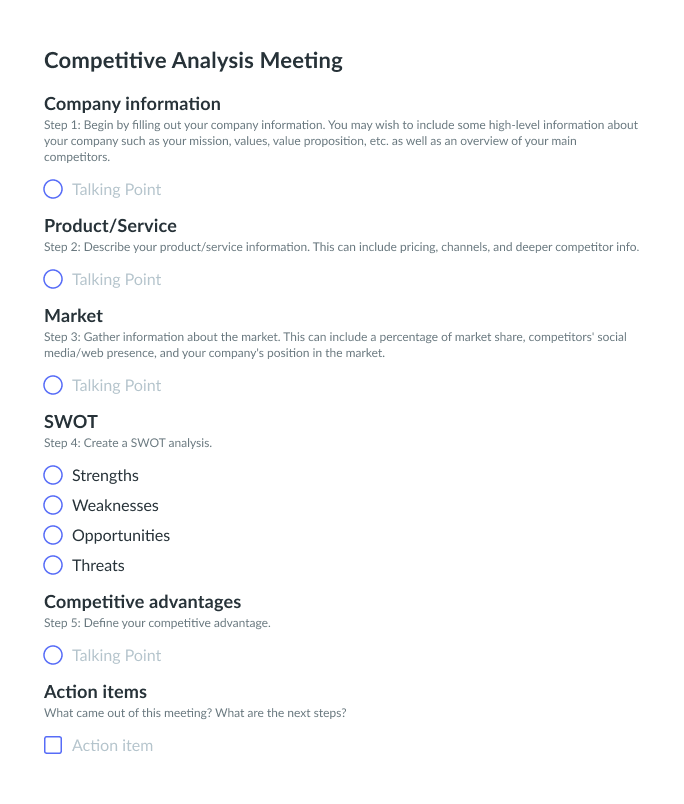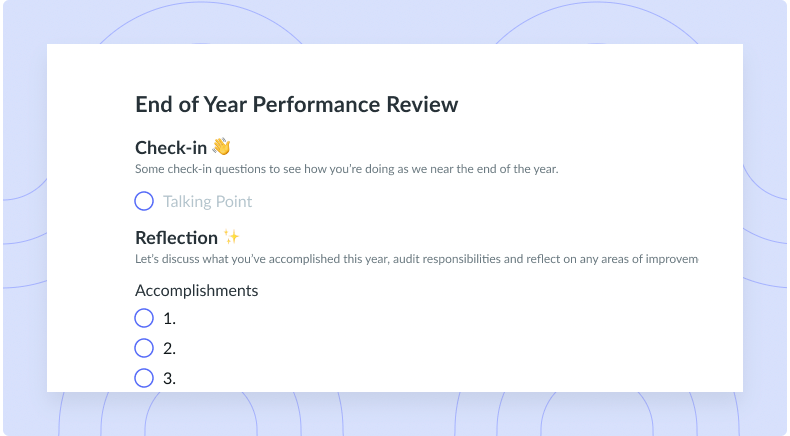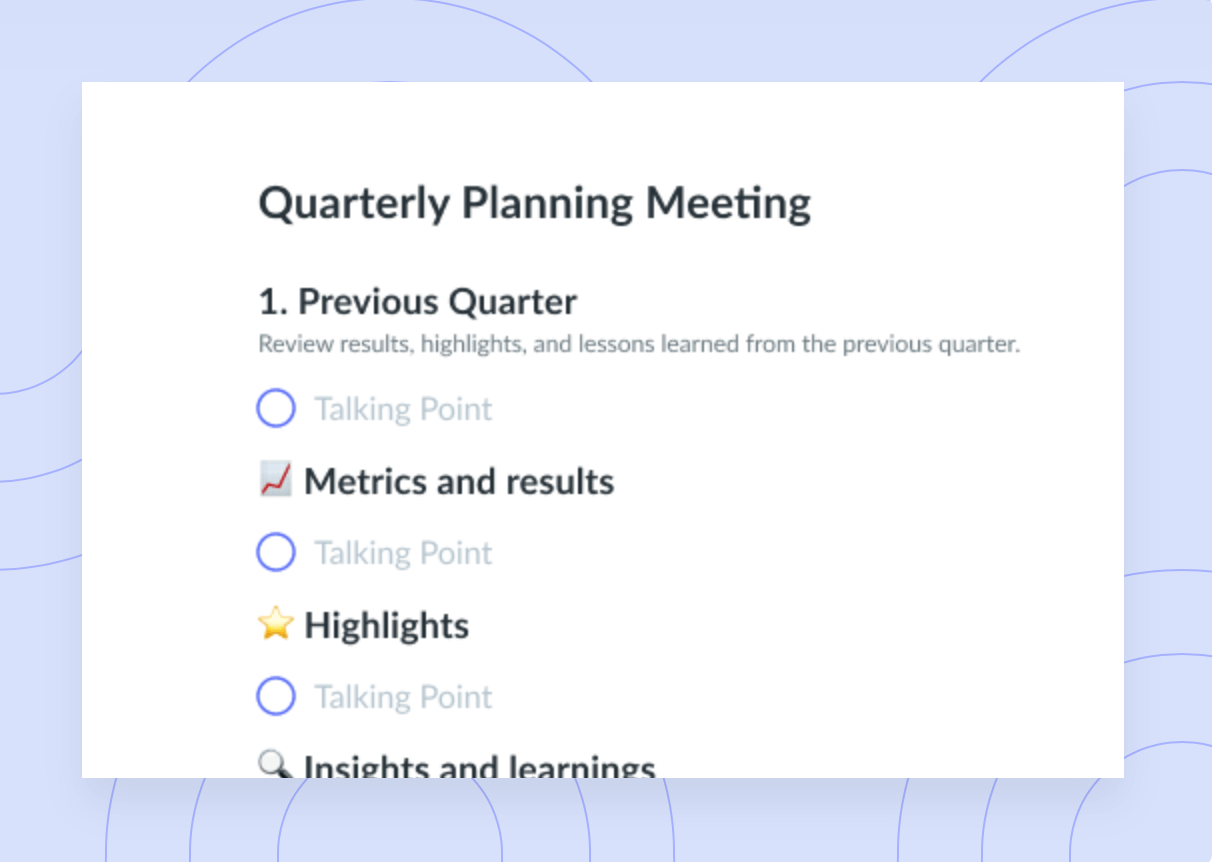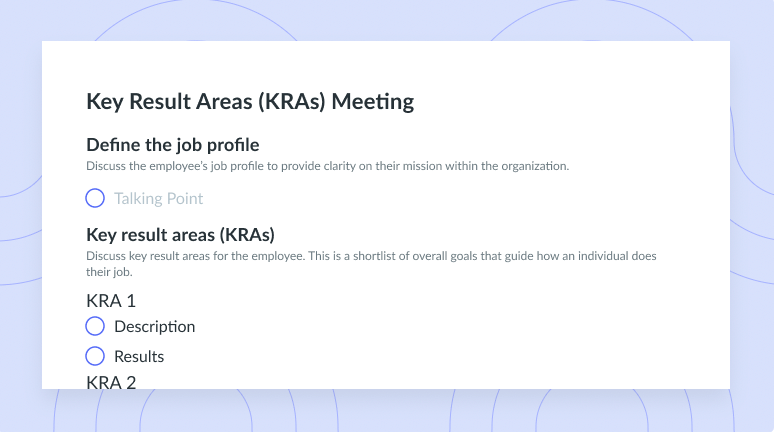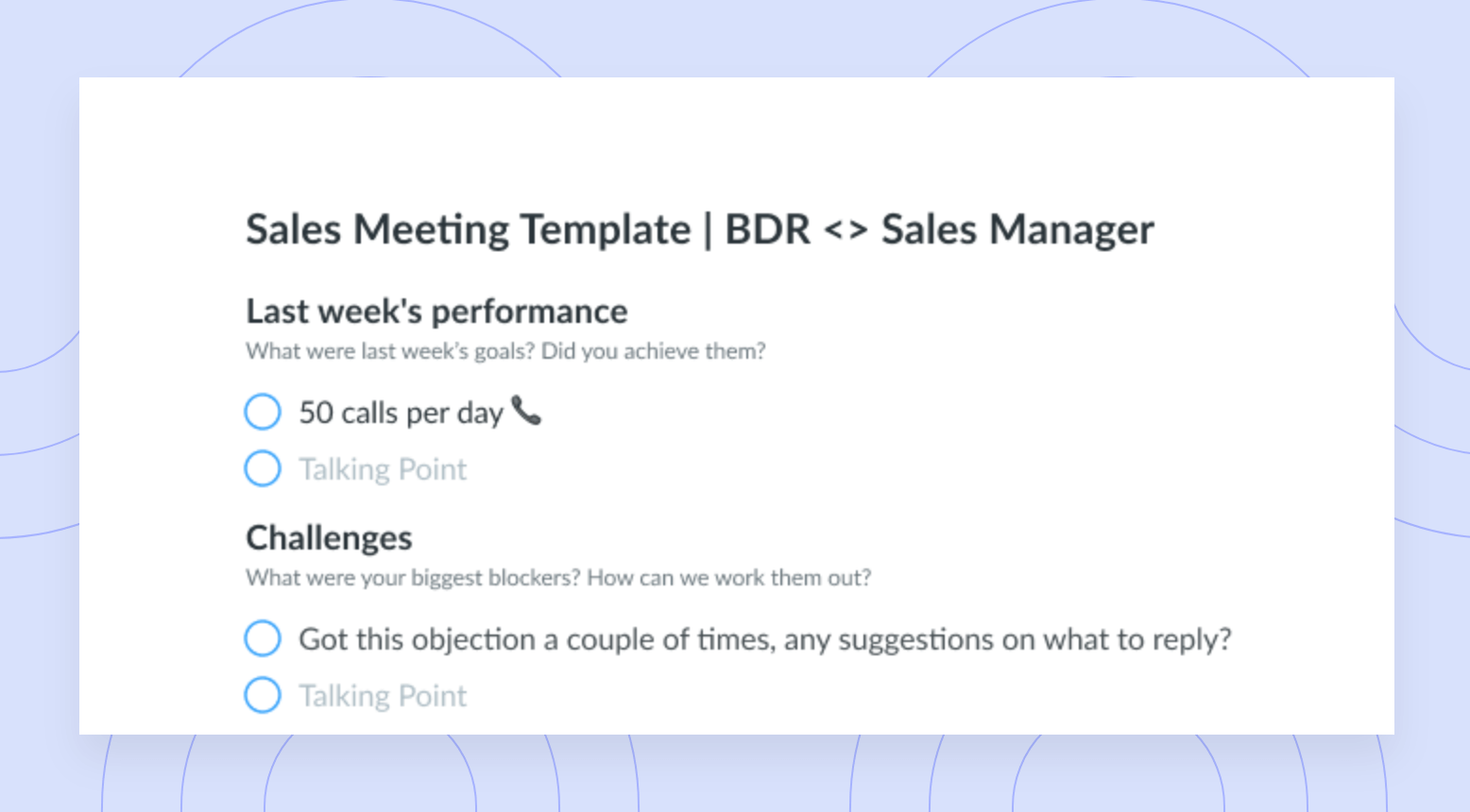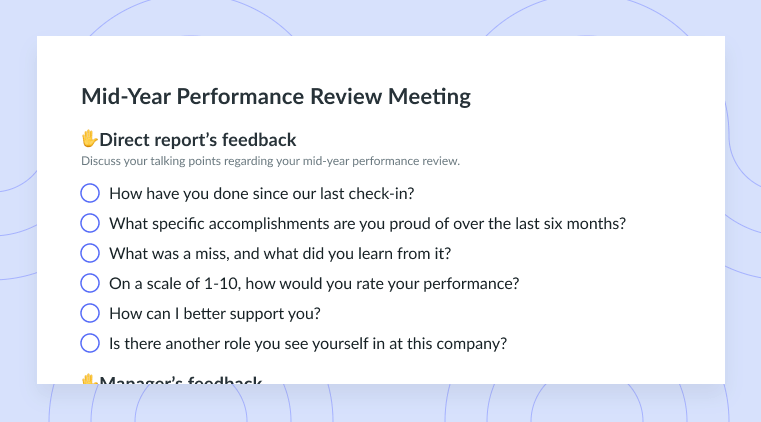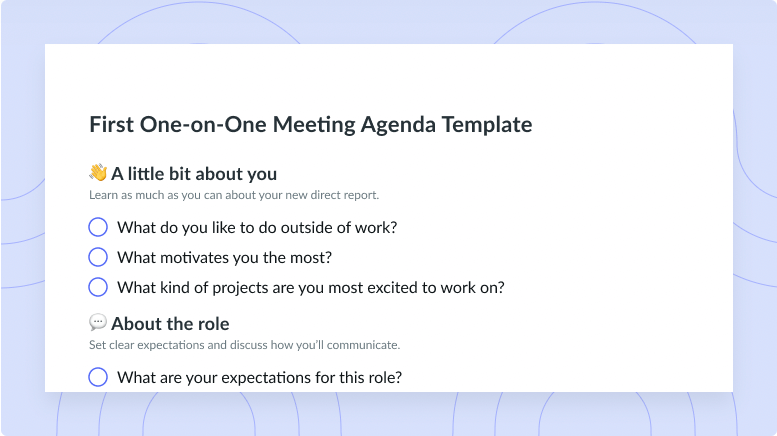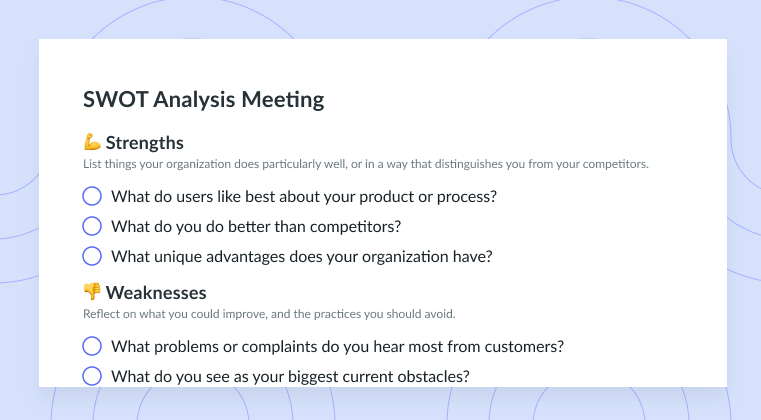
Competitive Analysis Meeting Template
Get this templateUse this template to see where your product stands in the market. You can learn more about what's working, what's not, and how to improve.


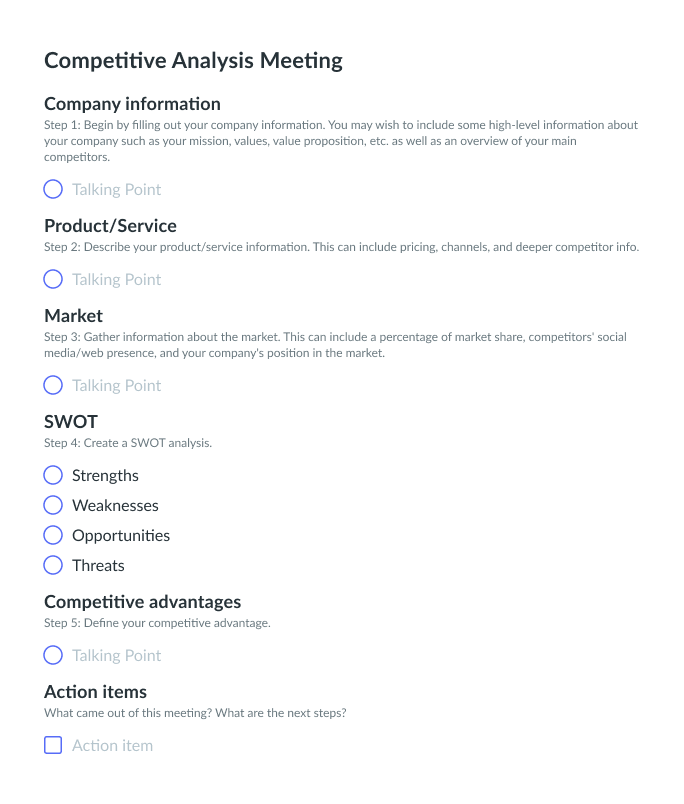

Competitive Analysis Meeting Template Overview
“The time your game is most vulnerable is when you’re ahead. Never let up.” — Rod Laver, Adidas
Competitive analysis is crucial for the success of any company, regardless of size or industry. When you know what your competitors are doing, you know how you can better compete against them. A typical competitive analysis includes examining a competitor’s features, market share, strengths, weaknesses, pricing, customer reviews, customer base, and products.
These meetings can happen as frequently as you need them to, but companies hold them quarterly in most cases. A competitor analysis template is crucial in helping you organize the thoughts and information that must go into a competitive analysis meeting. Depending on the size of your market, it can be tedious and time-consuming to analyze every competitor.
A competitive analysis meeting should include the members of your marketing team, possibly product development, your analytics team, management, and whoever else you see fit to attend. There isn’t a person within your company that should be aware of the competitors but analyzing the moves they make is an entirely different concept.
Analyzing the competition can help you improve your products and services, resulting in more conversions and sales. Utilizing a competitive analysis template is a terrific way to get input regarding your competition from your team members.
How to Run an Effective Competitive Analysis Meeting
The first step of running any meeting successfully is the right amount of preparation. Competitor analysis is very involved, so you’ll need some input from marketing and analytics to prepare for these meetings. Identifying commonalities and critical characteristics is essential, and there are specific people in certain departments that can do this work for you.
Ask for the required paperwork well in advance so team members have the chance to get it to you long before the meeting. Don’t forget that you’ll need time to review it and convert it into easy-to-digest information for everyone in attendance. Define your goals, determine what data needs collecting, know your competition, collect that data, and then analyze said data.
As we’ve mentioned before, there is nothing simple about competitive analysis, and it’s vital to have the correct information to present and then create a strategy. In many ways, competitive analysis is a group effort, so don’t hesitate to let team members in on where you stand before every analysis meeting. Holding the meetings quarterly will give you plenty of time to collect data and solidify your talking points.
What’s inside Competitive Analysis Template:
“Competition is always a good thing. It forces us to do our best. A monopoly renders people complacent and satisfied with mediocrity.” — Nancy Pearcy, author
These product competitive analysis template sections will prepare you to present the necessary information to your team members.
Also known as a competitor analysis, a competitive analysis will allow you to see where your product stands in the market. You can learn more on whats working, whats not, and how to improve.
1 Company information
Step 1: First and foremost, you’ll need the company information of your competition. It could be a long list or relatively short, but either way, you must know everything about them.
From their customer base to their preferred marketing methods, you must know it all. It would help if you had a team dedicated to competitor research, or it could be a member of your marketing team. This research is essential for the competitive analysis meeting.
2 Product/Service
Step 2: Describe your product/service information. This can include pricing, channels, and deeper competitor info.
Having a full grasp of the competitor’s products and services means knowing how they compare to your own. You could provide an in-depth analysis of their services and products by making a personal purchase to grasp the benefits and drawbacks better. It’s an excellent way to explore product quality, customer service, and packaging. Allow team members the time needed to discuss their take on competitor products as well.
3 Market
Step 3: Gather information about the market. This can include a percentage of market share, competitors’ social media/web presence, and your company’s position in the market.
When you know the target market your competitor focuses on, you know which market will best serve your company. Many businesses gain access to their demographics by studying which ones the competition uses. Your analytics and marketing team should have plenty of input for this section, so make sure you give them time to speak, and, don’t count out taking other target market avenues.
4SWOT
Step 4: Create a SWOT (Strengths, Weaknesses, Opportunities, Threats) analysis.
Your SWOT analysis should focus on the strengths, weaknesses, opportunities, and threats of your company. This section is a great place to brainstorm with your team regarding what makes you strong, where your company needs help, which opportunities you’ve got, and possible competitive threats. You can take the list you developed for your own company and compare that to what you know about your competition.
5Competitive advantages
Step 5: Define your competitive advantage.
Another brainstorming session is excellent for the competitive analysis template’s competitive advantages section. You’ve got to know where your company has the edge over the competition. There is no better way to obtain that information than from your team and their painstakingly gathered analytics and data. Take your time and focus on this section extensively, as when you determine where your competitive edge is, you can build on it accordingly.
6Action items
What came out of this meeting? What are the next steps?
You’ll leave your competitive analysis meeting by assigning action items to various teams to continue their work, making marketing and business direction decisions based on the analysis you’ve just discussed. Please encourage them to follow up with questions.

